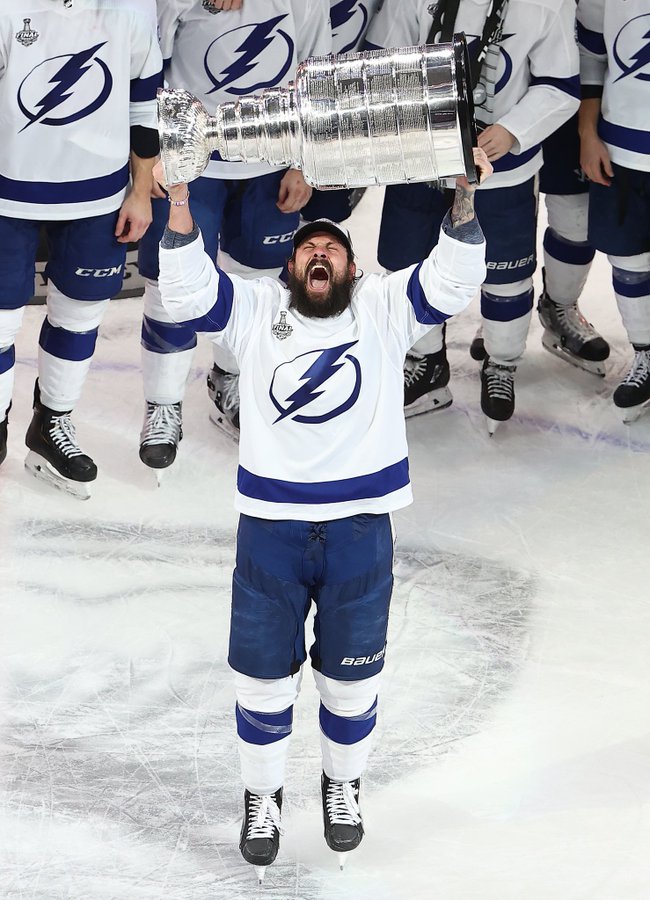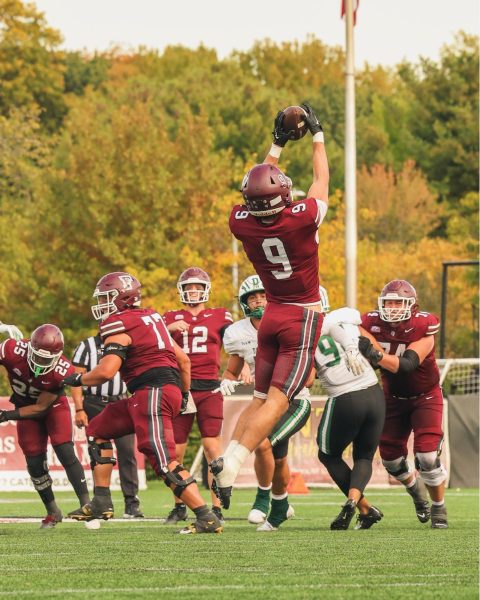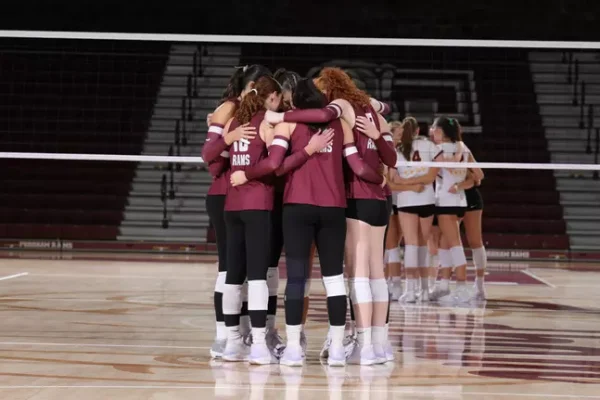Four Storylines From This Week’s Stanley Cup Final
Last Monday, Sept. 28, one year and six days after the first games of the 2019-2020 NHL season were played, the Tampa Bay Lightning lifted the Stanley Cup for the first time in franchise history. Regular season play was suspended indefinitely on March 12, 2020, due to the outbreak of COVID-19. After a four-month hiatus, the NHL returned on July 28 in a two-bubble system that involved 24 teams and more than a thousand players, coaches and staff members. On Sept. 28, commissioner Gary Bettman announced that after nearly three months of bubble-play and tens of thousands of COVID-19 tests, the NHL bubble had received zero positive test results.
When the league announced their ambitious plan in late May for a 24-team playoff, many people were skeptical. However, today the NHL bubble serves as the gold standard for health and safety in professional sports. Gary Bettman, league officials, and bubble healthcare workers deserve the utmost praise for this feat.. While zero positive cases should be the main takeaway from this year’s playoffs, the actual gameplay was exceptional as well. Here are four brief looks at the drama that the NHL had to offer this season.
The Lawyer
In 1999, John Cooper was a public defender struggling to make ends meet in Lansing, Michigan. That year, district court Judge Thomas Brennan asked Cooper to coach his son’s high school hockey team. Cooper had no coaching experience or extensive knowledge of the game, but he accepted the job on a whim. He quickly fell in love with coaching: “I love taking 23 people who are all in different directions doing things and making them into one,” said Cooper. Cooper proceeded to lead the previously unsuccessful Catholic Central High to a regional championship and was named coach of the year by The Lansing State Journal. That season, Cooper coached Central Catholic in the historic Maple Leaf Gardens arena. Cooper reflects on sitting in the stands of the empty arena: “I just remember the feeling I had. I said, ‘I’m never going to be able to play here, but to be able to coach here, what a feeling that would be.’”
Over the next 20 years, Cooper followed his passion into the hockey world. He worked his way through the minor hockey circuit before making it to the NHL in 2013. While Cooper received much of the blame for Tampa Bay’s crushing defeat in the 2013 Finals, as well as the team’s disappointing playoff exits in 2019 and 2020, the franchise remained loyal to the young coach. Over 20 years after his fatal encounter with Judge Brennan, the public defender from Lansing, Michigan, is a Stanley Cup champion.
The War Horse
In a league that is constantly getting younger, 36-year-old Joe Pavelski led the Dallas Stars in this year’s playoffs. Last year, Pavelski was dealt from the San Jose Sharks after 13 seasons with the club in an effort to clear cap space for younger talent. As statistics have become a fixture in NHL front offices, the grizzled veteran has become somewhat of a rarity on professional rosters. Pavelski bucked that trend in these playoffs, finishing second in goal-scoring with 13 goals and breaking the record for most career playoff goals by an American. The record was previously set by Penguins forward Joe Mullen in the ’90s. Pavelski scored late in the third period of game 5 to keep the Stars’ season alive and played an uncharacteristically nasty and emotional brand of hockey. After 14years in the league, Pavelski likely knew this was his last shot at a championship. It wasn’t meant to be, but it was special to watch this undersized American hero make one last run at the Stanley Cup.
The Kid
Tyler Seguin was the second overall selection in the 2010 NHL entry draft. The 18-year-old rookie displayed dazzling offensive talent in his rookie season with the Boston Bruins. Seguin made his way into the 2011 Stanley Cup lineup Finals and lifted the Cup with Boston. In 2013, Seguin was moved to Dallas in a surprising trade that seemed to favor Dallas heavily. Reportedly, the Bruins front office thought Seguin didn’t have the toughness or maturity to deliver in the postseason. When asked about the trade, Bruins General Manager Peter Chiarelli said, “We’re not here to babysit.”
This indictment of Seguin’s character has followed him throughout his career. At times in Boston and Dallas, Seguin was the punching bag for media and fans. The forward’s lack of production in this year’s playoffs will only bolster Chiarelli’s 2013 claim. However, the way Seguin dealt with this adversity spoke volumes about his character. Early reports say that Seguin played through several severe injuries in the Finals and will undergo multiple surgeries in the offseason.
Furthermore, Seguin bought into a defensive-minded Stars system: blocking shots, backchecking hard and logging heavy minutes on the penalty kill. When success was not coming for him personally, he found a way to contribute with blue-collar assists on two goals in game 5. Seguin certainly has not put up the points he is capable of in the playoffs, but as for his character, he showed this year that he has come a long way from his days of needing a “babysitter” in Boston.
The Highest Mountain
Steven Stamkos has not had the best of luck in his career. The 30-year-old captain of the Tampa Bay Lightning has always seemed to catch raw luck at the largest moments in his career. In 2010, he was snubbed from the Canadian Olympic roster in a year where he scored 51 goals. In 2011, he “broke his face” in the Easter Conference Finals before his team was eliminated. In 2014, he finally secured a spot on the Canadian Olympic team, but broke his leg and missed the event. In 2018, as Stamkos zeroed in on his long-coveted Olympic appearance, the league announced that NHL players would no longer participate in the Olympics. In 2019, Stamkos led the Lightning to a historic regular season run, securing the first place President’s Trophy before being swept in the first round by the Columbus Blue Jackets. The string of bad luck continued this year as Stamkos was injured for seven months with a severe core muscle injury.
As Tampa Bay breezed through this year’s playoffs, the hockey world once again feared for Stamkos. It seemed as though Stamkos would be robbed of yet another career moment by injury. However, in Game 3, Stamkos surprised the world when he took the ice for warm-ups for the first time since before the outbreak of COVID-19. Early in the game, Stamkos scored a goal that put the Lighting up 2-0. From there, the Lightning never looked back, winning games 3and 4, taking a commanding 3-1 series lead before finishing off Dallas in game 6. Stamkos only played 2 minutes and 47 seconds before reaggravating his injury and missing the rest of the series. However, those 2 minutes and 47 seconds represented the difference between Stamkos’ many bitter disappointments and the crowning moment of his career.










































































































































































































